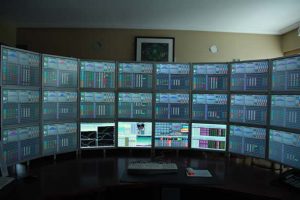 High Frequency Traders: Fight Back
High Frequency Traders: Fight Back
As author Michael Lewis reminded us this week with the release of his book, Flash Boys, high frequency traders (HFTs) are systematically sucking value out of the markets. Are you a victim, and what can you do about it?
First, how does this work?
Think about it like this: You call ahead to the supermarket to buy a bagful of groceries for $100. You finish the call and drive to the store. At the same time a speeding red Ferrari heads to the same destination. Arriving before you, the Ferrari driver buys your bag of groceries for the agreed upon $100 and then sells it to you for $100.05 when you finally arrive. The Ferrari driver makes a nickel on that order and on tens of thousands of other orders all day long.
Except we’re not talking nickels. The premium harvested by high frequency traders is estimated at around $160 million per day, or about 7 basis points per trade. It’s all done using incredibly fast, faster than you could possibly comprehend, private networks of fiber optic cables and superfast computers where the average investor can never see it or know it is happening.
High frequency traders operate in a surprisingly legal and very complex “I win, you lose” subset of Wall Street. There’s so much angst about it currently that we’re likely to see more regulation at some point. In the meantime, a new exchange is hoping to level the playing field. IEX, backed by major market players, requires HFTs to pass through a “magic shoe box” – a box with 60km of fiber cable that ensures you get enough time to make your trade without a Ferrari racing past you.
Who gets hurt?
Let’s assume every trade is being ripped off by that average 7 basis points. That’s $700 on every million dollars. How can you avoid that toll? Trade less! This is one of the fundamental principles of indexing – buy a diversified portfolio representing a range of asset classes, and step away from the trade button. In a well-designed portfolio, trading volume can be limited to new money added and periodic rebalancing. Passive buy and hold strategists – including investors who practice indexing through ETFs – trade so infrequently that HFTs can’t inflict any significant damage.
Active money managers, on the other hand, may turn over the entire content of a portfolio several or many times a year, paying the Ferrari drivers on every trip. Day traders, of course, get the worst of it, losing seven basis points on every trade all day long.
Add HFTs to the list of hurdles for active investors. Not only do they have to worry the difficulty of beating an index benchmark in the first place, they must also overcome the traditional trading costs associated with high turnover, and the drain of taxable capital gains. And as Flash Boys describes, they are also losing significant ground in trade execution to the HFTs. It’s no wonder that only about 15 percent of active managers beat their benchmarks over any significant timeframe.
Another win for passive index investing
Indexers like Osbon Capital execute rebalancing trades on a quarterly, semi-annual, or even an annual basis depending on relative performance of different asset classes and any changes in long-term financial goals. These rebalancing trades typically affect only a small portion of assets. With such limited trading, HFTs just can’t count on us to add much to their ingenious (or vulgar, depending on your perspective) toll collection scheme.
PS: How fast is fast?
A stock can trade about 150 times and experience about 500 quote changes in one millisecond – a thousandth of a second. That means in the time it takes your brain to recognize a word after your eyes see it, about 200 milliseconds, your stock could have traded 30,000 times. That’s a race we don’t want to be in.
Max Osbon – mosbon@osboncapital.com
Weekly Articles by Osbon Capital Management:
"*" indicates required fields
